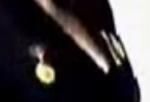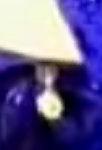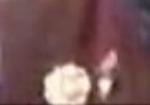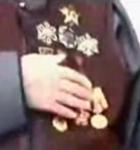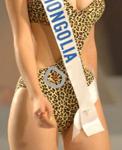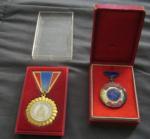-
Posts
14,343 -
Joined
-
Last visited
-
Days Won
25
Content Type
Profiles
Forums
Blogs
Gallery
Events
Store
Everything posted by Ed_Haynes
-

Mongolia Pix of orders / medals being worn
Ed_Haynes replied to Vatjan's topic in People's Republic Mongolia
Is that it? Nothing I can see on the (prominent) uniformed services. Play with it, comrades, . . . . -

Mongolia Pix of orders / medals being worn
Ed_Haynes replied to Vatjan's topic in People's Republic Mongolia
-

Mongolia Pix of orders / medals being worn
Ed_Haynes replied to Vatjan's topic in People's Republic Mongolia
Image Anthem 4b OK, better. (Ignoring cleavage!) Title of Merit (B A8) on the right // ??? / maybe Outstanding Worker of Culture (B S 03)? -

Mongolia Pix of orders / medals being worn
Ed_Haynes replied to Vatjan's topic in People's Republic Mongolia
-

Mongolia Pix of orders / medals being worn
Ed_Haynes replied to Vatjan's topic in People's Republic Mongolia
-

Mongolia Pix of orders / medals being worn
Ed_Haynes replied to Vatjan's topic in People's Republic Mongolia
-

Mongolia Pix of orders / medals being worn
Ed_Haynes replied to Vatjan's topic in People's Republic Mongolia
-

Mongolia Pix of orders / medals being worn
Ed_Haynes replied to Vatjan's topic in People's Republic Mongolia
-

Mongolia Pix of orders / medals being worn
Ed_Haynes replied to Vatjan's topic in People's Republic Mongolia
-

Mongolia Pix of orders / medals being worn
Ed_Haynes replied to Vatjan's topic in People's Republic Mongolia
Image Anthem 2 OK, this is the boy I wanna figure out! Sukhbaatar Polar Star /RM Military Valor (?) / Polar Star ??? ??? / ??? / Soviet Victory Over Japan Maybe if I captured it a few seconds earlier of later . . . ??? -

Mongolia Pix of orders / medals being worn
Ed_Haynes replied to Vatjan's topic in People's Republic Mongolia
Let me try some stills. The best I can get from the YOUTUBE images. Nice to see these worn, especially by well-known rock stars (which I assume these folk to be). Not there long enough to get "into" pop music, especially in a language some of whose sounds I don't think I shall EVER be able to make, much less speak, understand, or read with facility. Image Anthem 1 OK, let us get rid of him, jewelery only. -

Mongolia Pix of orders / medals being worn
Ed_Haynes replied to Vatjan's topic in People's Republic Mongolia
OH WOW OH WOW OH WOW OH WOW!!!!!!!!!!! Thanks! Haven't seen this since I was in UB. Makes me want to go back (too). -

Mongolia Pix of orders / medals being worn
Ed_Haynes replied to Vatjan's topic in People's Republic Mongolia
OK, I finally found it, for some reason I was distracted. Would guess it is MRYL Badge (B V02). What do I win? I already have the badge -

Dilema....
Ed_Haynes replied to Chris Boonzaier's topic in Great Britain: Orders, Gallantry, Campaign Medals
Me too, and come what may. If you don't it WILL haunt you. Will see you in debtor's prison? -
By your reference to "natives", I shall assume you mean Indians (in the pre-1947 sense). Given the sense in which the word "native" was and is used, it is a grossly inappropriate word, similar to ni**er (which was and is also used to describe Indians). Unless of course, you intend it in its generic sense, as I do when I might refer to medals to natives (of the British Isles) being more (GENERALLY) expensive that those to Indians. Anyway, there are several issues: 1- For enlisted men in the Indian Army medals have indeed been harder to research down to the individual level. Generally speaking, personnel records have been (and are still) retained by the regiments and/or battalions. The 1922 reorganizations brough havoc to record keeping as did the three-way partition of the Indian Army in 1947. While efforts are currently underway to preserve and centralise non-current or pre-1947 records that survive, there is also the concern that the release of any of these personnel records is in violation of Indian law. For enlisted men, research as to what the battalion was doing when the man was (presumably) with them is usually the best we can do. Regimental histories, usually written (pre-1947) by natives (of the British Isles), rarely make mention that anyone other that these selfsame natives served in the regiments; generally, the same is true for the war diaries, though there is more variability here. Research on VCOs is much easier, as they are listed in the army lists and a photo can usually be located; a lot can be done with a VCO's medal. Medals to European officers are the same as any other medals to natives (of the British Isles) and outside my concern. 2- There is no one-stop-shopping for research. The relevant records are spread out among the National Archives of Britain (Kew, aka the PRO), the India Office Records (now in Thatcherised captivity at the British Library), the National Archives of India (New Delhi), the Indian Ministry of Defence Historical Section (strictly off-limits to normal humans), and the individual regiments. For regiments that went to Pakistan, no one has a clue, as many records have been lost and destroyed; the National Archives of Pakistan, while they are very nice folks, have NOTHING. Speaking of destruction, the Brits intentionally destroyed many records just before their departure in 1947 and military records were one of their special targets; when British officers weren't busy stealing the regimental silver, they were also holding bonfires of regimental records. Likewise, leaving historical records in working offices is always a bad idea, and India is no exception. Unfortunately, there is no enforced Indian law on regular and routine transfer of non-current records to the archives. This has left many valuable things in the hands of non-archivally trained bureaucrats (in or out of uniform), who see those old records as just so much junk. This, for example, led to the Indian equivalents of the British WWI MIC cards being pitched out by the MoD medal office in the late 1970s. Genealogy is not a well developed hobby in India (for better or worse) and we do need to remember that it is only the demands of genealogists (we simply don't count) that have led to the preservation of so many records relevant to our general concerns in the UK. Efforts are underway to centralise a lot of surviving Indian records in the new Center for Armed Forces Historical Research (at the USI India in New Delhi), but there's a long way to go and what's gone is gone. 3- While I am not sure that much meaningful research can be done on the Internet, less is available for Indians than for Brits. 4- There is a perception, among ethnically British collectors of "British" medals that medals to Indians (or whatever ugly word they choose) cannot be researched. This has been said over and over so many times than many have come to believe it as a matter of dogma. 5- These days, most nice medals/groups don't make it out of India, as there are several very good and very sophisticated Indian collectors there who snag them. This, combined with the breaking up of a few classic collections from the 1950s and 1960s has driven up prices of Indian medals to where they are actually selling above MYB prices. 6- Speaking of the MYB, that insidious thing is everywhere. I have been shown it by village silver dealers who didn't know English, but could see the picture and read the price in pounds and convert to rupees and ask that for any medal they had in stock. Ignoring whether MYB prices and information are fantasy, the cursed book is omnipresent. 7- There is tremendous (and intentional?) ignorance about medals to Indians. The current BB&M edition is filled with so many errors that no one quite knows where to begin, though at least they removed some of Major Gordan's jovial racism that had been carried over from the earlier editions. There are hopes that the new edition will be better. Collective discussions are underway on doing an Indo-centric parallel book that focuses on the Indian military and mentioning in an "oh, by the way" fashion that some natives (of the British Isles) tagged along on things like the Chitral expedition. 8- Important, maybe the most important, is simple racism. Because these medals are not to Europeans, to "natives" (in your original usage), they are denigrated, as non-Europeans were (and still are?) denigrated. In the 1970s, a major London-based medal firm described their small and vocally resented stock of medals to Indians as their "nig**r drawer"; they still use that term today (or at least they did last summer). Until very recently, most UK-based medal dealers and auction houses could not be bothered to stock medals to Indians, dismissing them (the medals or the men?) as "bazzar trash". A few UK dealers and one major auction house have challenged this assumption and done very well from doing so, but old attitudes die hard, and phaleristics is no exception to society at large. As I said above, prices of medals to Indians have been rising and, in many cases, now exceed the corresponding medal to a European. Those of us who collect medals to Indians suffer from this and, at times, wish we could go back to the "bad old days" when one could but this "garbage" at kilogram prices. In those bad old days, in the mid-1970, I went into one silver dealer's shop in Rajasthan and asked if the owner had any medals. His response: "Kitne kilo chaiye?" "How many kilos do you want?" Despite what some think, those days are gone, in many ways (the same dealer now has acopy of the MYB), and one only needs to look at Phil Burman's lists or a recent DNW auction catalogue to see otherwise. Hope this overly long note is of interest to someone.
-

Award Criteria
Ed_Haynes replied to Riley1965's topic in Great Britain: Orders, Gallantry, Campaign Medals
The WWII one? BB&M or even MYB?? -
Midalit Al-Khidmat Al-'Alamat / The General Service Medal -- Originally intended to serve as a multi-purpose Omani general service medal (along British lines), for service of at least six weeks with a unit of at least company size, the medal has to date only been awarded with one bar, for the Dhofar Rebellion. Despite apparent discussion to that effect, other bars have not been instituted, based on the principle that active service is part of the normal duty of Omani armed forces personnel. There is, for example, some suggestion that a bar was contemplated for the Second Gulf War. Awarded for suppression of the Dhofar rebellion led by the Dhofar Liberation Organization (created 1964) and the Popular Front for the Liberation of Oman and the Arab Gulf (PFLOAG, created 1964), later (in 1974) merged and renamed as the Popular Front for the Liberation of Oman (PFLO); these groups received assistance from the People's Democratic Republic of Yemen (PDRY or South Yemen). The Dohfar bar was awarded for fourteen days of consecutive service, thirty days of visits, or service abnormally terminated by wounds between 23 May 1965 and 20 June 1976 in those areas of the Dhofar Province and adjacent waters lying between longitude 52?00' and 56?30' E and latitude 16?30' and 18?00' N. Suppression assistance came to the Omani government from Iran, Jordan, and the United Kingdon and financial support came from India, Pakistan, Saudi Arabia, and the Trucial States (later, the United Arab Emirates). About 1971, the obverse of the medal was redesigned with the name and title of Sultan Qaboos. The die for the medal, with legends altered and the bar omitted, was used (at short notice) for the Accession Medal of Sultan Qaboos in 1970 (see below). Established: Struck by Spink & Son (London, England). Obverse: Circular, gilt, Omani coat of arms in the center. Inscription in Arabic above and, below; as these inscriptions differ for the various issues of the medal, they are detailed below. The medal is suspended from a straight-bar suyspender. The bar bears the name of the campaign in Arabic, "Dhofar"; so far, only this single bar seems to have been issued to this medal. Reverse: Mountains above laurel branches, Arabic inscription above. Ribbon: Equal of red, off-white, and green. The original ribbon design was intended to represent the three regiments of the Omani army: the Muscat Regiment (red), the Northern Frontier Regiment (green), and the Desert Regiment (sand), but there is also the interpretation that the colors represented blood, sand, and the green of the Jebel Akhdar region. When the ribbons were finally made, the sand-colored stripe came out very light, appearing - ironically and embarassingly - as if the ribbon represented the red-white-green colors of the opposing Dhofar Liberation Front. After Sultan Qaboos' accession to power, these colors were those used in the new Omani flag, so the embarsassment that ahd existed before was diminished. The ribbon of the Sultan Said medal may be seen carrying a bronze (or silver?) khanjar device or a bronze palm leaf representing bravery in battle. Awards: The medal was also awarded to Iranian and Jordanian troops who served in this campaign; this came in addition to their own national awards. British troops were not (officially) allowed to receive both this medal and their own Campaign Service Medal 1962 with "Dhofar" bar; many British officers on long-term loan to Oman did, however, opt for the Omani medal. -- Sultan Said (1965-70) - with his name in the obverse inscription - very rare. -- Sultan Qabus (1970-76) - with his name in the obverse inscription - the common variety. (This is the variety shown below.)
-
Just noticed this thread, sorry. Sometimes, it takes me a while . . . The Omani medals for this campaign: Midalit Al-Hamalat / The Campaign Medal -- Awarded to all officers and trained enlisted men (untrained personnel were excluded) who participated the the Jebel Akhdar War against the followers of Imam Ghalib bin Ali between 1 November 1958 and 1 February 1959. Established: By Sultan Said bin Taimur in 1959. Manufactured by Spink and Son (London, England). Obverse: A circular oxidized bronze medal. In the center, the Omani national emblem. Above and below, legends in Arabic. The medal is suspended from a swiveling straight-bar suspender (this is the only Omani medal to have aswiveling suspender). Bronze-gilt examples have been reported, but they seem to be merely trial or presentation specimens. Reverse: A wreath surrounding the lower two-thirds of the Medal. Above, a legend and, in the center "1378-79 H. [= 1958-59 C.E.]" and "JABAL AKHDAR / 1958-59". Ribbon: Diagonal stripes of green and red. This color scheme is said to represent the Jebel Akhdar (literally "Green Mountain") defanced with blood. The ribbon may be seen carrying a bronze (or silver?) khanjar device representing bravery in battle (essentially, a MiD).
-
Yes. But there was still the Sino-Soviet tension; Europe was not the whole world for Soviet foreign policy. Maybe there was also the feeling was that Tsedenbal should have been happy with his Kutuzov 1st class, two Lenins, and an October Revolution? But what a waste making up that Honorary Freeman of the Mongolian People's Republic "Golden Star" Medal just for Brezhnev in 1974 if there was to be no reciprocity. For the earlier era, Choibalsan's Suvorov 1st class, two Lenins, RSFSR Red Banner, and USSR Red Banner. Were probably seen as "enough" too for pre-Brezhnev goody-distribution?
-
And finally, for now, a documented item, with which I am very happy. A documented Title of Merit (A8) set (type 2.1, 26 June 1981, #607). To Dorzh Bathuyag for excellent work in collective farms. See: http://gmic.co.uk/index.php?showtopic=5056&st=14
-
1- 80th Annniversary of the Revolution (B A56) 2- Champion of Socialist Competition (B X01, Type 1.2, #3761)






